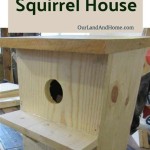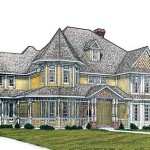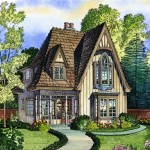Pier beam house plans are detailed blueprints that outline the design and construction of a house built on piers or pilings. These plans provide a comprehensive guide for building a sturdy and elevated structure, typically used in regions with variable soil conditions or flood-prone areas. Pier beam foundations offer stability and prevent moisture damage by raising the house above the ground level.
For instance, in coastal regions, pier beam house plans are prevalent due to the presence of unstable soils or high water tables. These plans ensure that the house remains elevated, protecting it from potential flooding or soil erosion. The piers or pilings are driven deep into the ground, providing a secure base for the structure.
As we delve into the specifics of pier beam house plans, we will explore the advantages, design considerations, and construction techniques involved in building these elevated homes.
When considering pier beam house plans, several key points come into play:
- Elevated foundation
- Flood and moisture protection
- Suitable for uneven terrain
- Customizable design options
- Energy efficiency
- Durability and longevity
- Cost-effective in some cases
- Local building code compliance
These aspects highlight the versatility and benefits of pier beam house plans, making them a popular choice in various regions.
Elevated foundation
Pier beam house plans feature an elevated foundation system, which is a crucial aspect of their design. This foundation type raises the house above the ground level, providing several advantages:
Flood protection: Elevated foundations are particularly beneficial in flood-prone areas. By raising the house above the anticipated flood level, pier beam foundations help protect the structure from water damage, ensuring the safety of occupants and belongings.
Moisture prevention: In regions with high humidity or water tables, elevated foundations prevent moisture from seeping into the house. The piers or pilings act as a barrier, keeping the house dry and preventing potential issues like mold, mildew, and rot.
Adaptability to uneven terrain: Pier beam foundations are well-suited for uneven or sloping terrain. The piers or pilings can be adjusted to different heights, allowing the house to be built on a stable and level surface, regardless of the ground conditions.
Additionally, elevated foundations contribute to energy efficiency. The space beneath the house allows for air circulation, reducing moisture buildup and promoting natural ventilation. This can lead to lower cooling costs in warm climates.
Flood and moisture protection
Pier beam house plans offer exceptional protection against flooding and moisture, making them a preferred choice in areas prone to these hazards.
- Elevated foundation: The most significant advantage of pier beam houses is their elevated foundation. By raising the house above the ground level, pier foundations ensure that the structure remains dry even during floods. The piers or pilings act as a barrier, preventing water from reaching the house.
- Flood vents: Pier beam house plans often include flood vents, which are openings in the foundation that allow water to enter and exit during a flood. These vents help equalize water pressure, preventing the house from floating or collapsing. Flood vents are typically fitted with covers to keep out debris and pests.
- Moisture barrier: The elevated foundation of pier beam houses creates a moisture barrier between the ground and the house. This barrier prevents moisture from seeping into the house, reducing the risk of mold, mildew, and rot. Additionally, the space beneath the house allows for air circulation, promoting ventilation and further preventing moisture buildup.
- Durable materials: Pier beam houses are typically built using durable materials such as concrete, steel, or pressure-treated wood. These materials are resistant to moisture damage, ensuring the longevity of the structure.
Overall, pier beam house plans provide comprehensive flood and moisture protection, making them an ideal choice for areas with high water tables, frequent flooding, or humid climates.
Suitable for uneven terrain
Pier beam house plans excel in accommodating uneven terrain, making them a suitable choice for challenging building sites.
- Adaptability: Pier beam foundations can be easily adjusted to different heights, allowing the house to be built on a stable and level surface regardless of the ground conditions. The piers or pilings can be extended or shortened to suit the slope or unevenness of the terrain.
- Cost-effectiveness: In some cases, pier beam foundations can be more cost-effective than traditional foundations on uneven terrain. This is because they require less excavation and site preparation, which can reduce labor and material costs.
- Design flexibility: Pier beam house plans offer greater design flexibility compared to houses with traditional foundations. The elevated structure allows for the creation of unique and interesting designs, such as split-level homes or houses with garages or workshops beneath the main living area.
- Improved drainage: The elevated foundation of pier beam houses promotes better drainage, as water can easily flow beneath the structure. This helps prevent water buildup around the house, reducing the risk of flooding or moisture damage.
Overall, pier beam house plans provide a versatile and cost-effective solution for building on uneven terrain, offering stability, design flexibility, and improved drainage.
The adaptability of pier beam foundations makes them a popular choice for hillside homes, waterfront properties, and areas with rocky or sloping terrain. By allowing the house to be built on a level surface, pier beam foundations ensure structural stability and provide a solid base for the structure.
Customizable design options
Pier beam house plans offer a wide range of customizable design options, allowing homeowners to tailor their homes to their specific needs and preferences.
Flexible floor plans: Pier beam foundations provide greater flexibility in floor plan design compared to traditional foundations. The elevated structure allows for open and spacious floor plans, as well as the incorporation of unique features such as split levels, lofts, and walk-out basements.
Exterior customization: Homeowners can customize the exterior of their pier beam houses to suit their aesthetic preferences. The elevated foundation allows for various siding options, including wood, vinyl, brick, and stone. Additionally, porches, decks, and balconies can be easily incorporated into the design.
Interior finishes: Pier beam house plans offer flexibility in interior finishes as well. Homeowners can choose from a variety of flooring, wall treatments, and fixtures to create a personalized and comfortable living space.
Adaptability to different architectural styles: Pier beam foundations can accommodate a wide range of architectural styles, from traditional to modern and contemporary. The elevated structure provides a unique canvas for architects and designers to create visually appealing and functional homes.
The customizable design options of pier beam house plans empower homeowners to create homes that truly reflect their individual tastes and lifestyles. The flexibility of these plans allows for the incorporation of unique features, personal touches, and architectural styles.
Energy efficiency
Pier beam house plans offer several energy-efficient features that contribute to lower energy consumption and reduced utility bills.
- Elevated foundation: The elevated foundation of pier beam houses promotes natural ventilation and air circulation. This passive cooling effect helps regulate indoor temperatures, reducing the reliance on air conditioning systems.
- Cross-ventilation: Pier beam houses often incorporate cross-ventilation design principles. By placing windows and vents on opposite sides of the house, natural breezes can flow through the structure, further reducing the need for mechanical cooling.
- Insulated flooring: The space beneath the elevated floor of pier beam houses can be insulated, creating a thermal barrier that minimizes heat loss and improves energy efficiency.
- Energy-efficient appliances and fixtures: Pier beam house plans can incorporate energy-efficient appliances, lighting fixtures, and windows to further enhance energy savings.
Overall, the elevated foundation, natural ventilation, and insulation features of pier beam house plans contribute to a more energy-efficient and sustainable living environment.
Durability and longevity
Pier beam house plans are known for their exceptional durability and longevity, ensuring the structural integrity and value of the home for many years to come.
- Resistant to moisture damage: Pier beam foundations elevate the house above the ground, protecting it from moisture and water damage. This is particularly important in areas with high humidity, flooding, or heavy rainfall, as moisture can cause significant structural damage to traditional foundations.
- Termite protection: Pier beam houses are less susceptible to termite infestation compared to houses with traditional foundations. The elevated structure creates a physical barrier between the ground and the wooden components of the house, making it difficult for termites to access and cause damage.
- Durable materials: Pier beam foundations are typically constructed using concrete, steel, or pressure-treated wood, which are known for their strength and durability. These materials can withstand various environmental conditions and provide a solid base for the house.
- Reduced maintenance: Pier beam foundations require minimal maintenance compared to traditional foundations. The elevated structure prevents moisture and debris from accumulating around the foundation, reducing the need for repairs and costly maintenance.
The combination of these factors contributes to the exceptional durability and longevity of pier beam house plans, ensuring the long-term stability and value of the home.
Cost-effective in some cases
While pier beam house plans may have a higher initial cost compared to traditional foundations in some cases, they can be more cost-effective in the long run due to several factors:
- Reduced maintenance costs: Pier beam foundations require minimal maintenance compared to traditional foundations. The elevated structure prevents moisture and debris from accumulating around the foundation, reducing the need for repairs and costly maintenance.
- Energy efficiency: Pier beam houses offer several energy-efficient features, such as natural ventilation and insulation, which can lead to lower energy consumption and reduced utility bills over the life of the home.
- Increased lifespan: Pier beam foundations are known for their exceptional durability and longevity. The elevated structure and use of durable materials ensure the structural integrity of the home for many years, potentially reducing the need for major repairs or replacements.
In areas with challenging soil conditions, such as expansive soils or high water tables, pier beam foundations may be the most cost-effective option. Traditional foundations in these areas may require extensive excavation, soil amendments, or waterproofing measures, which can significantly increase the construction costs.
Additionally, pier beam houses can offer cost-saving opportunities in terms of design flexibility. The elevated structure allows for creative floor plans and the incorporation of unique features, such as garages or workshops beneath the main living area, which can eliminate the need for separate outbuildings or additions.
Overall, while the initial cost of pier beam house plans may be higher in some cases, the long-term cost savings on maintenance, energy efficiency, and durability make them a cost-effective option for many homeowners.
Local building code compliance
Local building codes establish regulations and standards for the construction of buildings, including pier beam houses. Adhering to these codes is crucial to ensure the safety and structural integrity of the home, as well as to comply with local laws and regulations.
- Foundation design: Building codes specify the minimum requirements for pier beam foundations, including the size, spacing, and depth of the piers. These requirements are based on factors such as the weight of the house, soil conditions, and local seismic activity.
- Materials: Building codes also regulate the materials used in pier beam foundations. Concrete, steel, and pressure-treated wood are commonly used materials that meet code requirements for strength and durability.
- Elevation: Local building codes may specify minimum elevation requirements for pier beam houses, particularly in areas prone to flooding or high water tables. These requirements ensure that the house is elevated above the potential flood level to prevent water damage.
- Inspections: Building codes often require inspections of pier beam foundations during construction to verify compliance with code requirements. These inspections are typically conducted by local building officials to ensure the safety and integrity of the foundation.
Failing to comply with local building codes can result in delays, fines, or even the rejection of the building permit. It is therefore essential to consult with local building officials and adhere to all applicable codes and regulations when designing and constructing pier beam houses.









Related Posts








